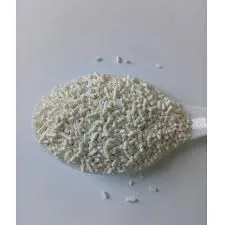
liquid fertilizer
The Benefits and Applications of Liquid Fertilizers
Liquid fertilizers have gained significant popularity in modern agriculture due to their efficiency and effectiveness in providing essential nutrients to plants. Unlike traditional granular fertilizers, liquid formulations offer a range of advantages that enhance their usability and overall impact on plant growth and development. This article will explore the benefits, applications, and considerations of using liquid fertilizers in agriculture and gardening.
One of the primary advantages of liquid fertilizers is their rapid absorption by plants. When applied, liquid fertilizers quickly penetrate the soil and are readily taken up by plant roots and foliage. This speed of absorption means that plants can access nutrients almost immediately, leading to faster growth and healthier crops. This is particularly beneficial during critical growth stages when plants are most susceptible to nutrient deficiencies.
Another significant benefit of liquid fertilizers is their versatility. They can be used in various application methods, including foliar sprays, soil drenching, and fertigation (the process of injecting fertilizers into an irrigation system). This adaptability allows farmers and gardeners to customize their fertilization strategies based on specific crop needs, soil conditions, and environmental factors. For instance, foliar application can be particularly effective for delivering micronutrients that are often needed in minute quantities but have substantial impacts on plant health.
Furthermore, liquid fertilizers can be formulated to provide a balanced mix of macro and micronutrients, tailored for specific crops
. This customizability ensures that plants receive exactly what they need at any given growth stage, minimizing waste and maximizing productivity. Several commercial products are available that cater to diverse agricultural needs, whether for vegetables, fruits, or ornamental plants.liquid fertilizer

In addition to nutrient delivery, liquid fertilizers can improve soil health. Many formulations are designed to enhance soil microbial activity and improve soil structure. This is crucial for sustainable farming practices, as healthy soil not only supports nutrient uptake but also promotes water retention and resistance to erosion. Through the use of liquid fertilizers, farmers can contribute to building a more resilient agricultural ecosystem.
However, it is essential to recognize the potential drawbacks of using liquid fertilizers. Overapplication can lead to nutrient leaching, which can contaminate water supplies and harm aquatic ecosystems. Therefore, it is crucial to apply these fertilizers judiciously and according to soil tests and crop requirements. Implementing integrated nutrient management practices can optimize the benefits while mitigating environmental impacts.
To maximize the efficacy of liquid fertilizers, timing and application methods are critical. Applying fertilizers during overcast days or in the early morning or late afternoon can minimize the risk of evaporation and ensure more nutrients are absorbed by plants. Additionally, combining liquid fertilizers with organic matter can further enhance nutrient availability and improve soil health over time.
In conclusion, liquid fertilizers are a powerful tool in modern agriculture, offering rapid nutrient availability, adaptability, and the potential for improved soil health. When used responsibly and strategically, they can significantly enhance plant growth and yield, contributing to more sustainable farming practices. As the demand for food continues to rise globally, liquid fertilizers will undoubtedly play a pivotal role in meeting these challenges, provided that their use is balanced with environmental stewardship. Farmers and gardeners alike are encouraged to explore the benefits of this versatile fertilization method to achieve optimal results in their cultivation endeavors.
-
Comprehensive Guide to Acetic Acid as Preservative: Benefits, Uses & Future TrendsNewsNov.24,2025
-
What Is a Food Additive? Global Insights, Applications & Future TrendsNewsNov.24,2025
-
968 Sweetener: The Modern Solution for Health-Conscious SweeteningNewsNov.23,2025
-
Discover the Benefits and Uses of 965 Sweetener (Erythritol) | Tenger ChemicalNewsNov.23,2025
-
961 Sweetener - A Next-Gen Sugar Alternative for Health and IndustryNewsNov.23,2025
-
Understanding 960 Sweetener: The Modern Sugar Alternative for Health and IndustryNewsNov.22,2025
-
Everything You Need to Know About 955 950 Sweeteners – Benefits, Uses, and TrendsNewsNov.22,2025
Hebei Tenger Chemical Technology Co., Ltd. focuses on the chemical industry and is committed to the export service of chemical raw materials.
-

view more DiethanolisopropanolamineIn the ever-growing field of chemical solutions, diethanolisopropanolamine (DEIPA) stands out as a versatile and important compound. Due to its unique chemical structure and properties, DEIPA is of interest to various industries including construction, personal care, and agriculture. -

view more TriisopropanolamineTriisopropanolamine (TIPA) alkanol amine substance, is a kind of alcohol amine compound with amino and alcohol hydroxyl, and because of its molecules contains both amino and hydroxyl. -

view more Tetramethyl Thiuram DisulfideTetramethyl thiuram disulfide, also known as TMTD, is a white to light-yellow powder with a distinct sulfur-like odor. It is soluble in organic solvents such as benzene, acetone, and ethyl acetate, making it highly versatile for use in different formulations. TMTD is known for its excellent vulcanization acceleration properties, which makes it a key ingredient in the production of rubber products. Additionally, it acts as an effective fungicide and bactericide, making it valuable in agricultural applications. Its high purity and stability ensure consistent performance, making it a preferred choice for manufacturers across various industries.





